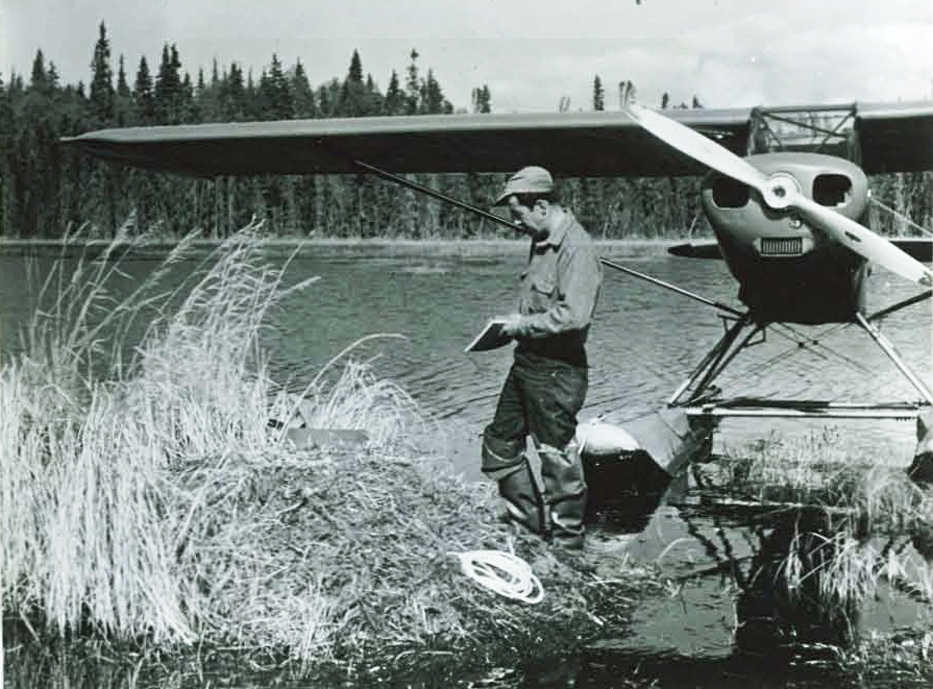As Veteran’s Day approaches and after reading an article on the recent book “Mission to the Kurils” in the Alaska Dispatch News on Nov. 6, I could not help but think of World War II veterans Dave Spencer and John Hakala, both former managers of the Kenai National Moose Range, now known as the Kenai National Wildlife Refuge. I was fortunate to know both men, but particularly John Hakala who was my neighbor for over 20 years. Both are deceased.
Dave Spencer was a naval aviator and flight instructor who enlisted in the Navy in 1942. After World War II ended, Spencer, a proficient pilot in amphibious aircraft, flew migratory waterfowl surveys throughout the country for the Bureau of Sport Fisheries and Wildlife (now the U.S. Fish and Wildlife Service) before reporting for duty as the first manager of the Kenai National Moose Range in 1948. The Moose Range, as many old-timers still call it, was established seven years earlier as America was entering WWII with the bombing of Pearl Harbor.
Spencer not only had to deal with being the first to manage what was then a relatively new and complex refuge, but was also instrumental in protecting National Wildlife Refuges throughout Alaska. His contributions to the Kenai Refuge — establishing the Swanson River and Swan Lake canoe systems and the Andy Simons Research Natural Area — and to Alaska, and other interesting stories of his tenure were documented by former refuge manager Robin West in Refuge Notebook Vol. 2, No. 11 (2000).
John Hakala enlisted in the U.S. Army Air Corp 1940, became a pilot, and flew B-25s from the Aleutian Islands on many bombing missions to the Kuril Islands, held by the Japanese at that time. Later, he also flew missions in the South Pacific.
After the war, as a young boy, I watched B-25s often pass low over our house in a rural area. The unique drone of their reciprocating engines and twin tail is still vividly etched in my memory.
And probably because I was a veteran of the Air Force with an interest in World War II aircraft, John told me stories of his wartime flying experiences. He said flying in the severe weather of the Aleutians, the long missions over water often on instruments, and running out of fuel probably accounted for more losses of aircraft and crew than the enemy.
John was refuge manager during the exploration and development of oil and gas resources on the Kenai Refuge. Recently-arrived residents of the Kenai Peninsula are often unaware that the 1957 Discovery Well for Alaska is on the Kenai Refuge. The ensuing time was a very controversial period in refuge history and John received a lot of pressure from the oil industry and politicians in his attempts to protect refuge wildlife and resources. More details about John’s life are available in Refuge Notebook Vol.8, No. 1 (2006).
Many World War II veterans have now passed away. My father’s and mother’s younger brothers both experienced action during World War II in the South Pacific. Fortunately, they, like Dave Spencer and John Hakala and many other veterans of that war, survived and upon returning further contributed as civilians to our country’s prominence and admiration in the world.
On Nov. 11, we honor these and all living and deceased veterans for their service.
Dr. Ted Bailey was the supervisory wildlife biologist at Kenai National Wildlife Refuge before retiring in 2001. He has lived on the Kenai Peninsula for over 40 years. Previous Refuge Notebooks can be found at https://www.fws.gov/refuge/Kenai/community/refuge_notebook.html.

